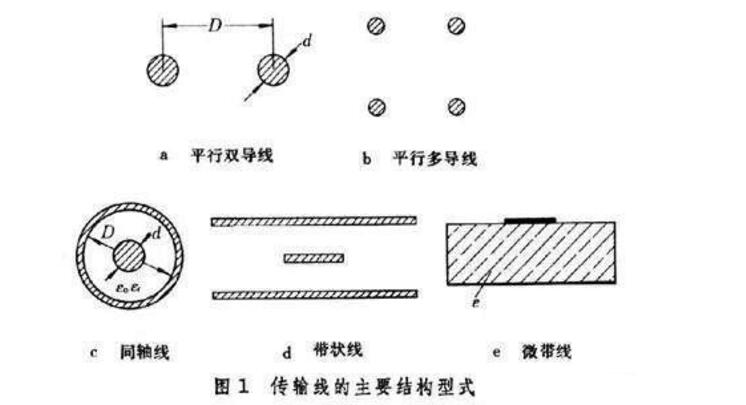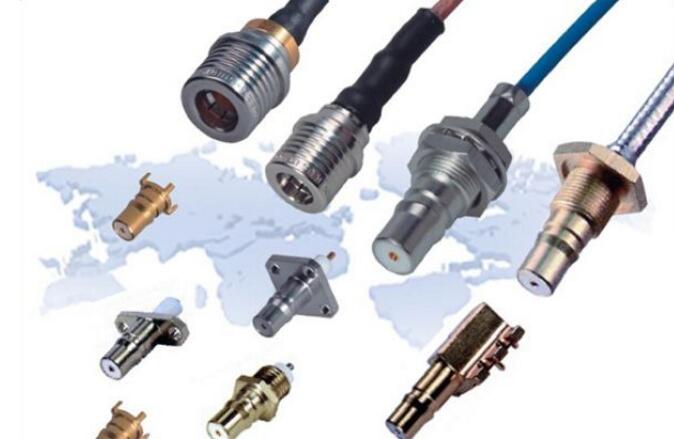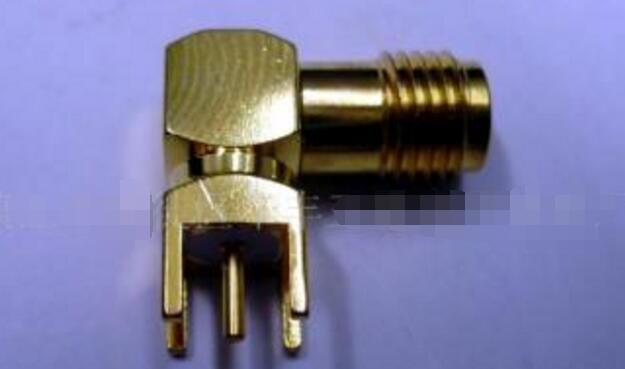
Privacy statement: Your privacy is very important to Us. Our company promises not to disclose your personal information to any external company with out your explicit permission.
An RF connector is defined as a detachable component that is typically attached to a cable or device for electrical connection of the transmission line system. As can be seen from this definition, it has the common feature of a "separable component" connector. “Transmission line system” refers to the microwave transmission system. The common transmission line structure is as follows:

Taking the commonly used coaxial line as an example, the main mode of the coaxial line is a TEM wave, and the field distribution is shown in the following figure:

The electromagnetic wave transmitted by it is an oscillating particle wave which is generated by the electric field and the magnetic field which are in phase and perpendicular to each other, and is an electromagnetic field propagating in the form of wave, which has wave-particle duality.
The electromagnetic wave is an electric field and a magnetic field which are oscillated in the same phase and are perpendicular to each other, and move in the form of waves in the space. The electric field direction of the electromagnetic wave, the direction of the magnetic field, and the direction of propagation are perpendicular to each other, and the electromagnetic wave has no longitudinal component and is a transverse electromagnetic wave.
RF connector classification and usage instructionsRF connectors are mainly divided into three categories: RF coaxial connectors, RF triax connectors and dual-core symmetrical RF connectors. The main uses are as follows:
1. RF coaxial connector: mainly used to transmit transverse electromagnetic waves (TEM waves);
2, RF triax connector: mainly used for the occasion of higher requirements on shielding efficiency, transmission of transverse electromagnetic waves (TEM waves) or transmission of pulse waves;
3, dual-core symmetrical RF connector: mainly used to transmit digital signals with a low rate.
1) The main performance parameters of RF coaxial connectors include characteristic impedance, frequency of use, return loss, insertion loss, isolation, RF leakage, phase consistency, and third-order intermodulation.
2) Common materials and coatings for RF coaxial connectors
The RF connector is mainly composed of external conductors, inner conductors and insulating support media. The commonly used materials are as follows:
★Outer conductor: stainless steel passivation, copper alloy gold plating, copper alloy nickel plating, copper alloy plating ternary alloy, etc.;
★ Inner conductor: copper alloy gold plating, copper alloy silver plating, etc.;
★Insulation support medium: PTFE, PEI, LCP, etc.

Impedance: Almost all RF connectors and cables are standardized to an impedance of 50 Ω. The only exception is that 75Ω systems are commonly used for cable TV installations. It is also important that the RF coaxial cable connector has the characteristic impedance of the matched cable. If this is not the case, a discontinuity can be introduced and lost.
VSWR (Voltage Standing Wave Ratio): Ideally, it should be united, good design and implementation can keep VSWR below 1.2 in the range of interest.
Frequency range: Most RF operations now range from 1 to 10 GHz, so connectors must have low losses in this area. For the case of 10 GHz or more - there is a lot of work, now in the range of 10 to 40 GHz - there are connectors that are newer. They are expensive because it is the cable itself.
Insertion loss: This is the connector loss in the frequency range of interest. Losses are usually between 0.1 and 0.3 decibels. How critical the watts per watt (or watts) is in most designs, even such small losses must be minimized and factored into the link loss budget. It is especially important at low noise fronts when signal strength and signal-to-noise ratio are low.
Operating cycle: How many connection/disconnection cycles can be connected and still meet the specifications? This is usually in 500 or 1000 cycles. Threaded connectors, supplier-specified tightening torques are an important factor in maintaining performance and reliability.
Power: Power handling is determined by two resistive losses (heating) and insulation breakdown. While even decades of design are primarily pre-processing tens of watts, today's design community focuses on low-power devices such as cell phones, picocells and femtocells, video interfaces, RF and gadgets. These are in the sub 1W range, so the connector can be much smaller and its rated power is a smaller constraint.

Email ke pemasok ini

Privacy statement: Your privacy is very important to Us. Our company promises not to disclose your personal information to any external company with out your explicit permission.

Fill in more information so that we can get in touch with you faster
Privacy statement: Your privacy is very important to Us. Our company promises not to disclose your personal information to any external company with out your explicit permission.